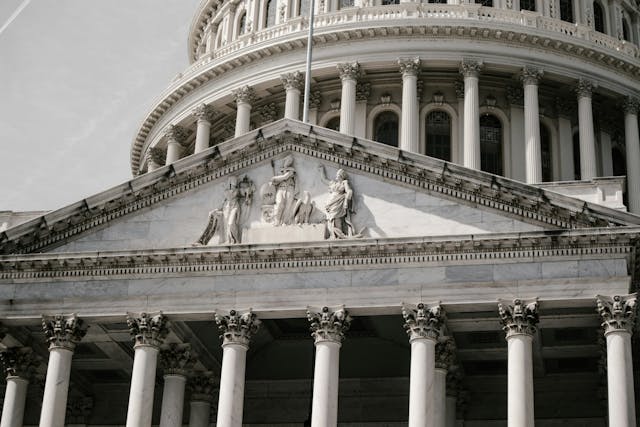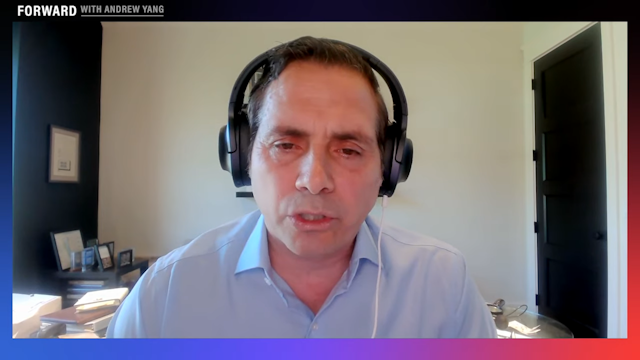What Happens if the Highway Trust Fund Gets Too Low?

By the time Dwight David Eisenhower became president of the United States, he had already secured historical immortality as the supreme commander of the victorious Allied Forces in the Second World War. While vanquishing the Nazis, he could not help but marvel at the infrastructural achievements of the Germans, most notably their broad highway network called the Autobahn.
The German’s national accomplishment juxtaposed strongly with the United States’ meagerly funded, crumbling interstate highway system.
Eisenhower had intimate knowledge of America’s highways. As a young lieutenant, he was part of the U.S. Army’s first Transcontinental Motor Convoy in 1919. The convoy traveled (more crawled) from Washington, D.C. to San Francisco. It took them two months to traverse the country, crossing cracked bridges, pushing through mud, and repairing equipment damaged by poorly maintained roads.His experiences in America and Germany committed him as president to enact the building of a modern interstate highway network.
As a result of his and Congress’ efforts, America’s interstate highway system was constructed and the Highway Trust Fund (HTF) was established in 1956 under the Highway Revenue Act. Before the act, highways were funded directly from the General Fund of the Treasury.
The HTF was established to serve as a “user-supported fund,” meaning that the money used to build and maintain the highway system would come directly from the people using the highways (i.e, the American public) by means of taxes. A variety of taxes go toward funding highways, including the gas tax, tire tax, truck and trailer sales tax, and the heavy vehicle tax.
As a result, some states contribute more to the HTF than others. For example, Ohio is home to America’s tire industry and therefore pays more in taxes. Same goes for states in which the oil industry has a significant presence. Some states receive more from the HTF than they give (Mississippi, for example). The HTF reimburses states for most of the costs of building and maintaining highways.
The HTF is also a “pay-as-you-go” fund, meaning simply that there must be enough money to make reimbursements. A section of the Revenue Act stipulates that unpaid commitments in excess of the amounts available in the HTF at the end of a fiscal year must be less than the revenues anticipated in the following 24-month period.
For example, if the HTF has $5 billion at the end of FY 2014, but $25 billion in unpaid commitments, it must make sure that the revenue it expects to receive in 2015 and 2016 is more than $25 billion. If expected revenue does not exceed $25 billion, then all funding for 2015 will be reduced proportionately in order to comply with the rule.
The gas tax is part of today’s HTF funding problem. The tax has not been raised since 1993 and it has not been indexed to inflation.Since 1993, cars have become extremely more fuel-efficient, which means drivers are filling up less than they did 20 years ago and thus paying less in taxes. As a result, revenues have not kept up with expenditures. The gas tax brings in $34 billion per year, but that is not enough to keep the HTF solvent. This has been a problem policy analysts have seen coming for years, but Congress did little to mitigate.
Congress has not sat on its laurels; both parties want to keep the HTF solvent and the 700,000 highway workers nationwide on the job. However, the two parties are at odds on how to secure new funding.
President Obama has offered his own plan for consideration, though it differs from what either chamber is proposing. If Congress fails to allocate new funding by August, the Department of Transportation will be forced to reduce reimbursements to states for outstanding highway projects and will also be unable to authorize new projects.
Construction contracts will be slowed or halted, thus putting jobs at risk. The financial burden of funding highways will fall on state governments, some of whom are better able than others to continue funding their projects.
5 states with the best highways (Based on 2013 data)
5. Montana
4. New Mexico
3. Wyoming
2. Kansas*
1. North Dakota
5 states with the worst highways (Based on 2013 data)
5. New Jersey**
4. California**
3. Hawaii
2. Rhode Island***
1. Alaska**
*Kansas is the only state on the top 5 list that contributes more to the HTF than it receives. The other 4 receive more than they contribute. North Dakota and Montana receive more than twice as much as they contribute. For more information, check out figures from the Federal Highway Administration.
**New Jersey, California, and Alaska receive less in funding for highway and infrastructure projects from the HTF than they contribute to the fund.
***Rhode Island is in a similar position as North Dakota and Montana. It receives more than twice as much from the HTF than it contributes.



